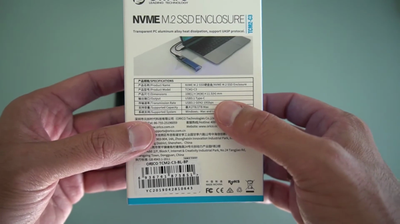
My use of the Western Digital 1TB WD Blue SN550 NVMe SSD (2024)
My thoughts on the WD Blue SN550 NVMe SSD: speed, installation quirks, reliability, and cost-effectiveness.
Introduction
I recently upgraded my computer with a WD Blue SN550 NVMe SSD and I've so far seen quite a major improvement in overall performance. Below I elaborate on what it's like moving from a SATA SSD to an NVMe SSD like this one.
Some photos (click to enlarge)

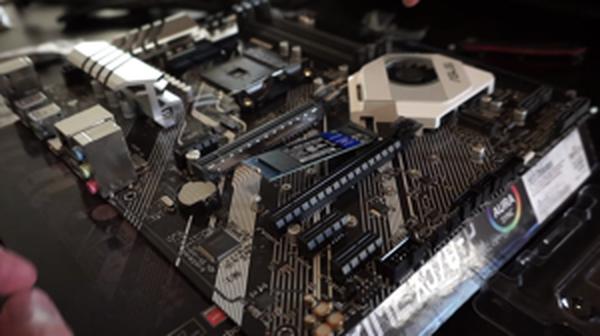
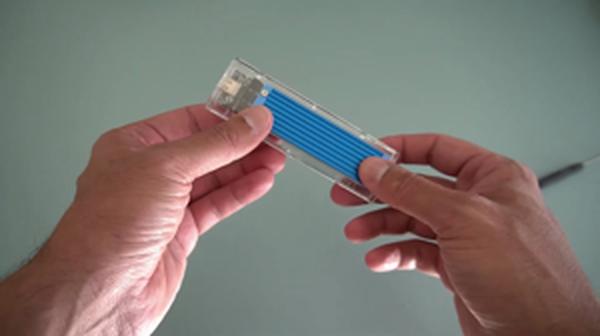
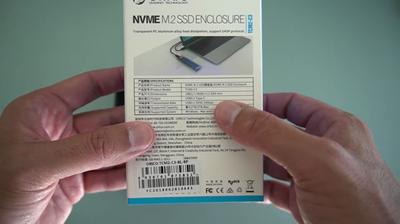
Specs of the Western Digital 1TB WD Blue SN550 NVMe SSD
- Release Year
- Brand
- Color
- Connectivity Technology
- Digital Storage Capacity
- Hard Disk Form Factor
- Hard Disk Description
- Hard Disk Interface
- Installation Type
- Special Feature
Prices
Performance Leap from SATA to NVMe
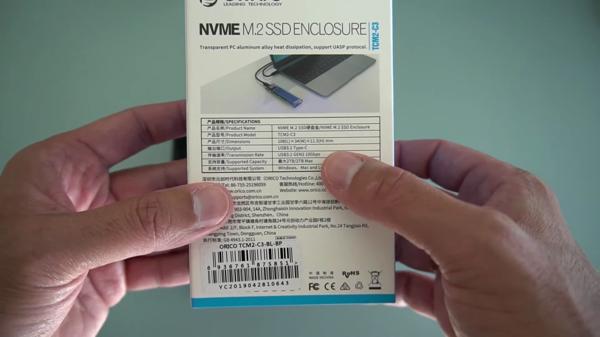
Making the switch from a traditional SATA SSD to the WD Blue SN550 NVMe SSD was like stepping out of a sedan and into a sports car - the speed difference is just that noticeable. Here's the lowdown:
SATA SSDs cap out at 600MB/s, which once felt fast.
NVMe SSDs, like the SN550, can hit 2,600MB/s or more, which is ridiculously quicker.
From the second I installed the WD Blue SN550, the performance jump was undeniable. Boot times? Slashed. File transfers? As if I'm just flicking them into place. And loading games? I barely have time for a sip of my coffee before I'm in the action.
However, it's not just the peak performance speeds that impressed me. This drive maintains snappiness even with multiple applications open, which is a testament to its IOPS (Input/Output Operations Per Second); this is what has genuinely elevated my computing experience.
But it's not all roses and rainbows. If there's a drawback to point out, it's the compatibility challenges. Older motherboards require a BIOS update or even might not support NVMe at all. Plus, you can't plug an NVMe drive into a SATA port – it's like trying to fit a square peg in a round hole, so make sure your motherboard has an M.2 slot first.
The WD Blue SN550, specifically, has found that sweet spot between performance and cost, making it approachable for even casual users who just want a faster PC. Now, I haven't conducted formal benchmarks like the tech gurus, but day-to-day use tells me all I need to know - this thing is fast. It reminds me of the first time I switched from HDD to SSD; everything just feels instant.
Even in the context of long-term file storage, where NVMe doesn't flex as much muscle compared to when it's used as a boot drive or for loading heavy applications, I still see the benefits. Large file libraries are more navigable, and file retrieval feels more responsive.
For anyone considering upgrading their storage setup, these are pointers worth noting straight from my user experience. Sure, NVMe will set you back a little more than SATA, but in my mind, the extra investment pays dividends in time saved and frustration spared. But always double-check that your system can fully utilize this speed demon before taking the plunge. After all, you wouldn't want to unleash a racehorse only to keep it trotting around a tiny paddock, would you?
Installation and Compatibility Considerations

When I decided to upgrade to the WD Blue SN550 NVMe SSD, I had my work cut out for me with installation and ensuring compatibility with my existing system. Here's a quick rundown of my experience:
BIOS Update: I discovered my motherboard needed a BIOS update to fully support the NVMe drive. This was a bit nerve-wracking but necessary for the drive to operate.
M.2 Slot Check: My motherboard did have an M.2 slot, thankfully. I had to confirm it was an M-key and capable of PCIe Gen3 x4 to maximize the drive's potential.
Secure Installation: Installing the SSD itself was straightforward. Slide it into the slot at an angle and fasten it down with the tiny screw – just be patient and have a magnetic screwdriver handy.
OS Migration: Transferring the operating system was a bit tricky. The included Acronis software didn't work for me, so I used a third-party application which made the process smoother.
Heatsink Consideration: My WD Blue SN550 didn't come with a heatsink. I knew that NVMe SSDs can run hot, so I decided to add a third-party heatsink for peace of mind.
Here's what stood out to me: the process isn't always plug-and-play, especially if you're relatively new to PC assembly or upgrades. Check your motherboard's specs carefully, as not all M.2 slots are created equal and some may only support SATA M.2 drives, not NVMe ones. Also, prepare for potential BIOS updates—backup your data before you venture down that road.
That said, once the drive was installed and running, the speed improvements were unmistakable. Applications launch in a flash, and data transfers are swift. Gaming performance also saw a decent boost, with shorter game load times.
One drawback to keep in mind is that, while the WD Blue SN550 is quick, it's not the fastest on the market. If you're a power user, you might crave even quicker speeds, which will cost more. But for my needs—streamlined work productivity, some gaming, and general use—it's more than sufficient.
Also, remember that this SSD may require proper heat management, especially in a compact or poorly ventilated case. Depending on your setup and usage, it might be worth investing in additional cooling solutions to maintain drive longevity and reliability.
Overall, installing the WD Blue SN550 NVMe SSD was a learning experience, but once up and running, it's given my PC a new lease on life. It's an upgrade I would recommend, just be prepared for a bit of a setup process.
Long-Term Usage and Durability of SN550

Having used the WD Blue SN550 NVMe SSD for a considerable amount of time now, I'm quite happy with its performance and overall durability. Here's a quick rundown of my experiences:
Speed and Performance: The drive still boots quickly, and file transfers remain fast.
Durability: No signs of degradation or performance issues, which speaks to the build quality.
Heat Management: Generally remains cool under load, though I'd recommend proper airflow.
The SN550 has been a reliable workhorse for my daily computing needs. When it comes to doing anything that requires quick data access, like editing videos or compiling code, it's performed admirably. One standout feature I've particularly appreciated is the snappy boot times. Gone are the days of waiting for a sluggish HDD to trudge along.
On the note of durability, I've stress-tested this drive through daily heavy use, and I must admit it's built tough. I haven't experienced any data loss or errors which can be a concern with some SSDs over time. Western Digital's reputation for creating durable drives seems to be well deserved based on my experience with the SN550.
Heat can be an SSD's nemesis, but the SN550 has coped well. Its temperature has stayed within safe limits during my extended gaming sessions and while handling large video files. I still recommend ensuring your PC case has good airflow to aid heat dissipation, especially if you're pushing your hardware with intensive tasks.
However, it's not all perfect. The SN550, while fast, isn't the top of the NVMe speed charts. Users requiring the absolute fastest data transfer speeds might look towards more expensive drives with PCIe Gen4 support. Additionally, the peak speeds advertised are often theoretical, and real-world performance can be influenced by the rest of your system's specifications and the workloads you're throwing at the drive.
Still, I consider these drawbacks to be minor compared to the overall gains and reliability of the SN550. It's a testament to the longevity and quality Western Digital has baked into this SSD. As with any tech, advancements will continue, but for now, the SN550 remains a pertinent player in my setup, offering a solid blend of performance, capacity, and reliability that's hard to beat for its price point.
Value Proposition and Future-Proofing

In the world of computing, speed and storage space are king, and the WD Blue SN550 NVMe SSD is a game-changer that comes with its set of perks and caveats. Let's break it down:
Pros:
Significantly faster than SATA SSDs.
M.2 2280 form factor saves space.
Affordable entry into NVMe technology.
Good brand reputation with Western Digital.
Cons:
PCIe Gen3 x4 limits top speed compared to newer PCIe Gen4 interfaces.
Installation may require BIOS updates or specific motherboard compatibility.
Larger capacities can get pricey.
For some systems, the benefits of NVMe speeds may not be fully realized due to other hardware limitations.
Cost and Capacity
Buying tech can often lead to the trepidation of obsolete gear in a year or two, and value for money is critical. In this sense, the SN550 feels like a smart investment. The leap in performance justifies the price, especially if you've been stuck on older SATA tech. With sizes up to 1TB, I found enough room for my needs without breaking the bank.
Speed
The speed jumps off the charts compared to traditional SATA drives. System boots are swift, and data transfers are no longer a chore. It's quite the treat to see files move so rapidly – a boon for productivity or if you're like me, a casual gamer looking to shave off load times.
Future-Proofing
Here's the double-edged sword. This SSD is fast, no doubt, but with PCIe Gen4 on the horizon, there's a lingering question about future-proofing. Still, for many, the Gen3 x4 speeds will remain more than adequate for the foreseeable future, especially considering the associated costs with jumping on the Gen4 bandwagon right now.
While Western Digital's SSD dashboard is a nice touch for monitoring health, it's not unique, and there are other tools available that provide similar insights. Also, bear in mind the NVMe tech isn't universally compatible – my older desktop needed a BIOS flash to recognize the drive.
As a conclusion, for anyone looking to give their PC a notable speed boost without spending a fortune, the WD Blue SN550 NVMe SSD sits in that sweet spot of performance, price, and capacity. It's an incremental upgrade for now that's sure to extend the life and utility of your existing hardware. Sure, newer tech is always on the horizon, but after more than a year of use, I can safely say this upgrade is one that still feels worth it today. And should the time come for a new build, this SSD will undoubtedly move with me, continuing its service as a reliable workhorse.
Comments (0)
Share